TO BUILD A STRONG, muscular physique, you can’t ignore your back muscles. Fixating on your chest, arms, and abs, like some short-sighted gym bros, is a huge mistake. You’ll do yourself a major disservice by only giving your mirror muscles attention. Not only will you be leaving strength and muscle gains on the table, but your posture will tank and the aesthetic appeal of your physique will also suffer from imbalances.
You’ll be best served by including movements in your workouts that target your back—and no back workout is complete without exercises that hit the traps muscle.
What Is the Traps Muscle?
The traps (a.k.a. the trapezius or trapezoid muscle) is the large, quadrilateral-shaped muscle that takes up a large portion of your upper back, stretching from the occipital bone of your skull to the lower thoracic vertebrae of the spine and out to your scapula (shoulder blades).
Given this position, well-developed traps can be important for both your posture and in developing the top of the highly sought after V-taper physique. The trapezius is actually composed of three distinct parts, all named based on their position: the superior (a.k.a. upper or descending) trapezius, the middle (a.k.a. transverse) trapezius, and the inferior (a.k.a. ascending or lower) trapezius.
What Does Your Traps Muscle Do?
Each section of the traps has a function. The superior traps support your arms and raise your shoulder blades, the middle traps are essential and inferior traps are essential for scapular retraction, depression, and rotation. These movements are all essential for moving your upper body, and in the ways that you engage with the world around you. Shrugging your shoulders, raising your arms, and other movements use your traps, so training them to be as strong as they can be will help you out in more than just the big back department.
Benefits of Training Your Traps Muscle
- Posture
- Aesthetics
- Function
As noted above, a well-developed trapezius muscle can contribute to good posture. The muscle is also key to the top of the V taper torso shape, a common aesthetic goal for guys. Training your traps will also pay off in spades for your strength exercises like deadlifts, and strong traps are key for the muscle’s functions of supporting your arms and scapular retraction, depression, and rotation.
You’ve likely heard that you need to shrug, shrug, shrug to grow your traps. You can do that—but there are more movements you have at your disposal to build up your back muscles.
Add these exercise to your upper body training sessions to start building bigger, stronger traps. The ultimate goal: become a traps king.
The Best Traps Exercises
Trap Bar Deadlift
No, this exercise isn’t on the list just because ‘trap’ is in the name. Deadlifts require you to recruit back muscles—namely, your traps—to hang onto the weight as your big leg muscles work to raise it off the floor, making this a total-body, trap-heavy exercise. The trap bar will allow you to work with even heavier loads than the standard barbell, too, so you’ll be able to build big muscle.
How to Do It:
- Step inside the trap bar with your shins aligned with the center of the bar.
- Push your butt back, bend your knees, and reach down to grip the handles. Grip as tightly as possible.
- Keep your head in a neutral position, squeeze your shoulder blades to create tension, and turn the pits of your elbows forward, facing out.
- Make sure your hips are lower than your shoulders, then prepare to initiate the lift.
- Push your feet through the floor to stand straight up, squeezing your glutes at the top.
- To finish the rep, push your butt back as far as you can, then bend your knees to set the weight down.
Farmer’s Carry
Heavy carries are some of the best bang for your buck exercises you can do, so it should come as no surprise that your traps stand to benefit from a few loaded laps around the gym. Make sure to keep your shoulders and back engaged throughout, since slouching will kill your back and core gains.
How to Do It:
- Hold a weight (dumbbells or kettlebells will do) in each hand at your sides.
- Engage your core and back, holding a strong, upright posture.
- Take even, measured steps, controlling the weight and maintaining your posture for either a set time or distance.
Face Pull
Get your face in on the action with this underrated trap move. The face pull can be performed with a cable machine or even a resistance band, if you’re focused on mastering the form to help bulletproof your back and shoulders. “The face pull hits lower traps when done right,” says Men’s Health fitness director Ebenezer Samuel, C.S.C.S., “which is actually super-critical and useful to shoulder health.”
How to Do It:
- Set the cable machine or resistance band at a roughly eye-level height. Grab the cable rope handles or the ends of the band in each hand in an underhand grip.
- Squeeze your shoulder blades to pull toward your face, keeping your elbows high and resisting the urge to lean forward.
- Pause to squeeze once you pull back as far as you can, then control the cable/bands back to the starting position.
Incline Dumbbell Row
This beastly back exercise gets you off your feet and removes your ability to use body English to cheat, making it a much tougher contraction at the top of the lift. You’ll rest your chest on the bench, but make sure to keep your position one of work—no slouching off or resting your forehead on the pad.
How to Do It:
- Get into position on the incline bench, facing forward with your chest resting on the bench, holding a pair of weights in your hands. Keep your torso active, squeezing your glutes and abs almost as if you were standing up.
- From there, engage your midback and drive with your upper arm to pull the weights up.
- Pause at the top, squeeze, and control the weight back down.
Dumbbell Military Press
This classic exercise is standard shoulder builder—but you’ll nail your traps, too. Working with dumbbells gives you an opportunity to work in more shoulder-safe positions, especially because you’ll be less inclined to try to lift more weight than you’re able to handle by stacking plates on a barbell.
How to Do It:
- Grab a pair of dumbbells and raise them to your shoulders. Brace your core and glutes to set a firm foundation—the biggest mistake you want to avoid if rounding your back under the weight. Make sure to keep your ribs from flaring.
- Once you’re ready to press, make sure that you’re not lifting straight up. You want to move in the scapular plane about a few degrees in front of your torso (to keep your rotator cuffs safe) so rotate your elbows out slightly. Squeeze your shoulder blades, then press the weight up.
- Lower back down in the same plane, controlling the weight down.
Dumbbell Snatch
You typically don’t think of explosive moves like snatches as back exercises, but posterior muscles like the traps are absolutely essential to proper form. You’ll get your whole body engaged to do the dumbbell snatch right, especially as you get the weight up above your head.
How to Do It:
- Start with the dumbbell on the ground in front of you between your legs with your feet wider than shoulder-width apart.
- Bend at the knees and hinge at the hips and grab the weight an overhand grip.
- Sit back on your heels, then explode upwards to stand, driving the weight up close to your body.
- Pull the dumbbell up as if you’re zipping a coat, then pull slightly back and land under the weight overhead.
- Lower the dumbbell to your shoulder slowly to finish the move.
Dumbbell Upright Row
This exercise variation presents a safer alternative to the barbell upright row, an exercise that was popular for old school bodybuilders but presents a major risk to your shoulder joints. By swapping for dumbbells, limiting the range of motion, and adding a squeeze at the top, you can break free of that fixed position and limit your risk of injury while you build the lateral head of your shoulders and your traps.
How to Do It:
- Stand with your feet shoulder-width apart, holding a pair of dumbbells in a pronated position (palms facing in).
- Squeeze your glutes and engage your core to prep yourself for movement.
- Raise the dumbbells straight up (think vertical pull).
- Once your elbows are slightly lower than your shoulders, pull back (think horizontal pull) and squeeze your shoulders for the row.
- Only lift the weights to a position parallel to your shoulders.
- Lower the weights back to the starting position with control.
Rack Pull
You won’t just work the traps with the rack pull — you’ll also hone your strength and form for other compound lifts. By taking the weight off the ground, you can focus more on the pull without the full range of motion and lower back stress of a standard deadlift.
How to Do It:
- Set up a rack or boxes so the barbell is elevated above your shins. Grab the bar at around shoulder-width with an overhand grip.
- Hinge at the waist and push your hips back and feet through the floor, pulling the bar up and keeping your back straight.
- Pause for a count at the top, then control the weight back down into place.
Dumbbell/Kettlebell Shrug
Compared to the barbell shrug, the dumbbell or kettlebell shrug places less stress on your shoulder joints. That’s because your shoulders don’t have to rotate to hold a barbell. This keeps them more stable as you perform the movement.
How to Do It:
- Grab a pair of weights and let them hang at arm’s length next to your sides, your palms facing each other.
- Shrug your shoulders straight up as high as you can. Imagine that you’re trying to touch your shoulders to your ears without moving any other parts of your body.
- Pause in the top position, then slowly lower the weights back to the start.
Barbell Row
Rowing exercises target your middle and lower traps and rhomboids, muscles that help keep your shoulder blades from moving as you lift a weight.
That’s important because unstable shoulders can limit your strength in exercises for your chest and your arms. Your upper traps, rear deltoids, and rotator cuff muscles will also assist in the rowing movement.
How to Do It:
- Grab the barbell with an overhand grip that’s just beyond shoulder width, and hold it at arm’s length. Bend at your hips and knees and lower your torso until it’s almost parallel to the floor. Keep your back naturally arched.
- Pull the bar to your upper abs and squeeze your shoulder blades toward each other.
- Pause, then slowly lower the bar back to the starting position.
Dumbbell Lateral Raise
Your middle deltoid may be the hardest working muscle during this movement, but your upper traps are working, too. This is a delt move at heart, but your traps assist in raising the weight and act as stabilizers. Just make sure that you don’t move with your arms totally at your sides—you want to work in the scapular plane here (i.e., 20 to 30 degrees in front of your torso).
How to Do It:
- Grab a pair of dumbbells and let them hang at arm’s length next to your sides. Stand tall, with your feet shoulder-width apart. Turn your arms so that your palms are facing forward, and bend your elbows slightly.
- Without changing the bend in your elbows, raise your arms to your sides and slightly in front of your torso (in the scapular plane, remember) until they’re at shoulder level.
- As your arms get close to parallel with the ground, think about turning your thumbs slightly upwards to the ceiling—you’re biasing your shoulders into external rotation by doing this, which is safer for your rotator cuffs. Your arms should form a T with your body.
- Pause for 1 second at the top of the movement, then slowly lower the weights back to the starting position.
Pullup
The classic bodyweight staple is a back-builder, and you’ll use your lats, traps, and other muscles to haul yourself up to the bar.
How to Do It:
- Grab the pullup bar with a tight overhand grip. Squeeze your shoulder blades, abs, and glutes to create full-body tension before you start doing reps, almost like a hanging plank.
- Pull yourself up to the bar, pausing briefly at the top.
- Lower your arms all the way down to hang at the bottom before the next rep.
Brett Williams, a fitness editor at Men’s Health, is a NASM-CPT certified trainer and former pro football player and tech reporter who splits his workout time between strength and conditioning training, martial arts, and running. You can find his work elsewhere at Mashable, Thrillist, and other outlets.


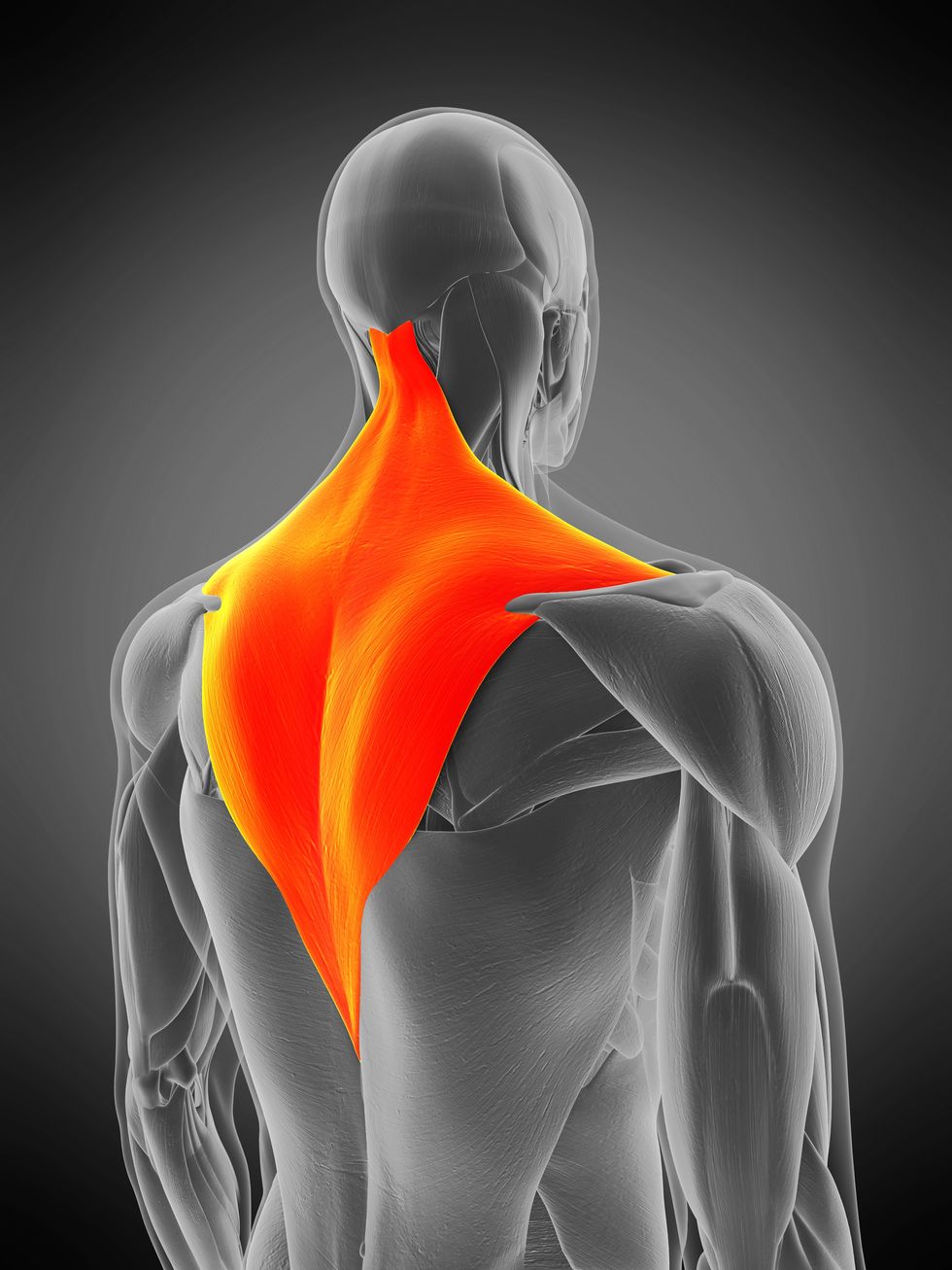
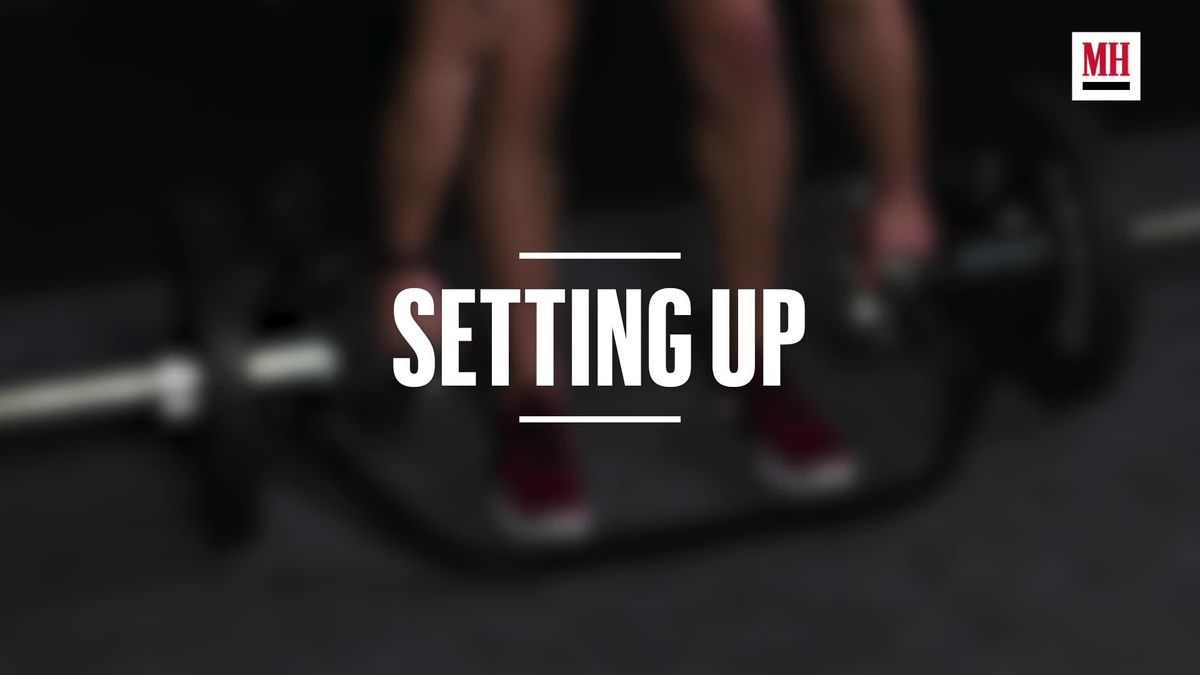
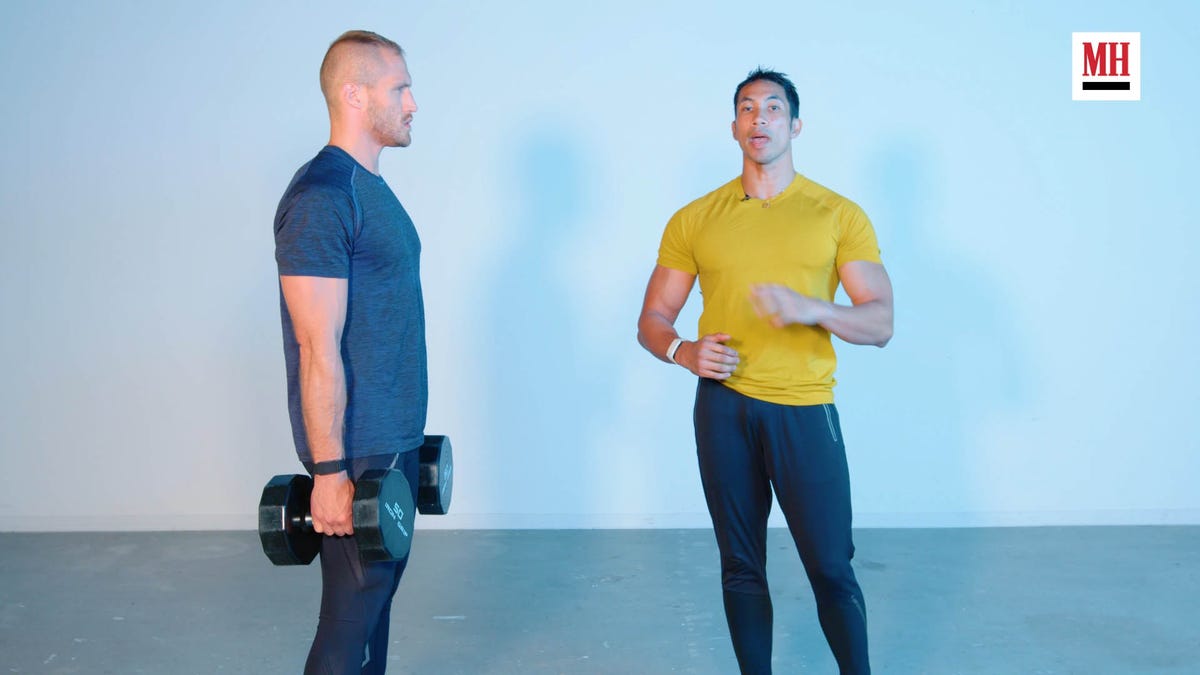
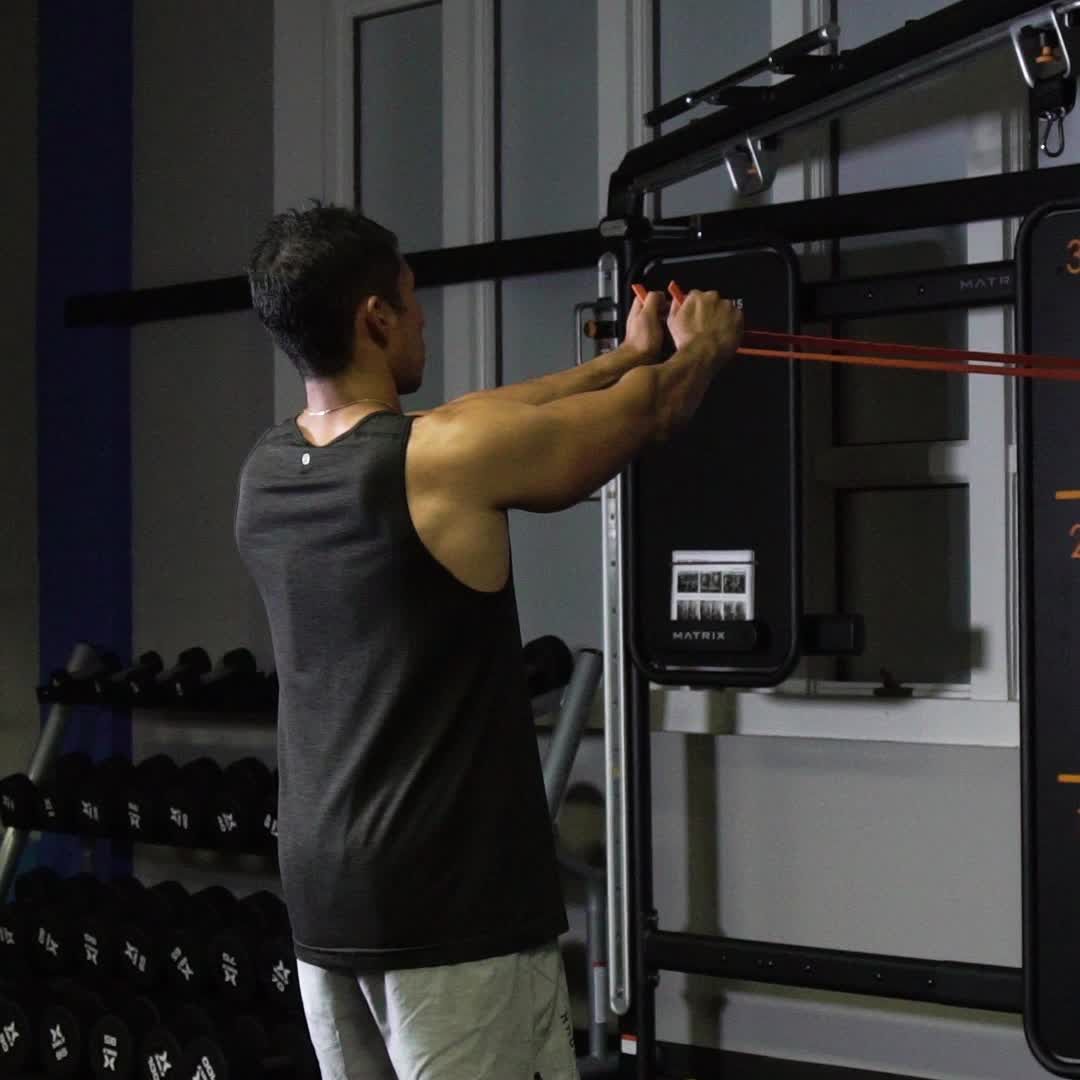
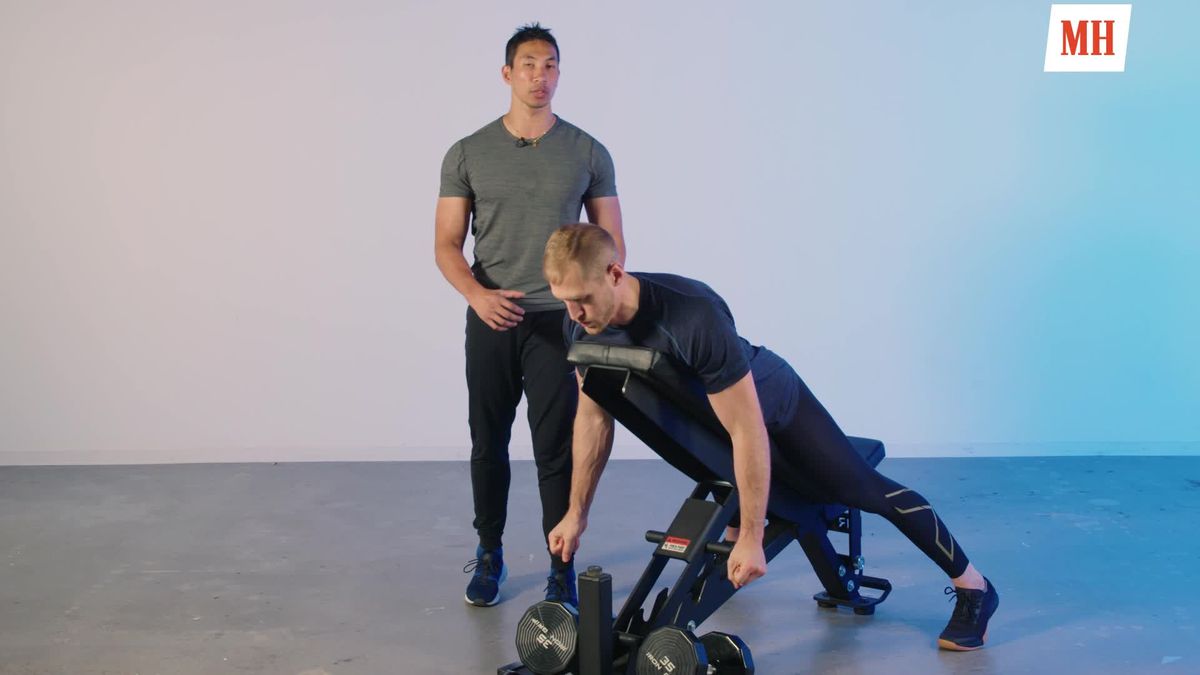
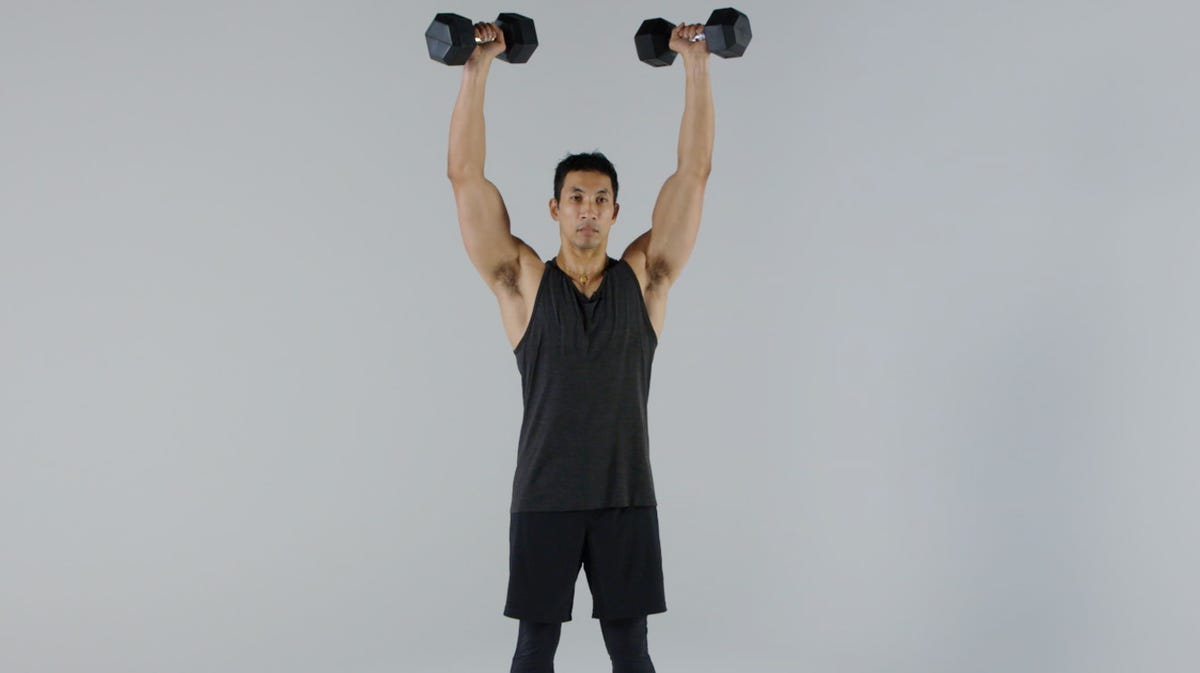
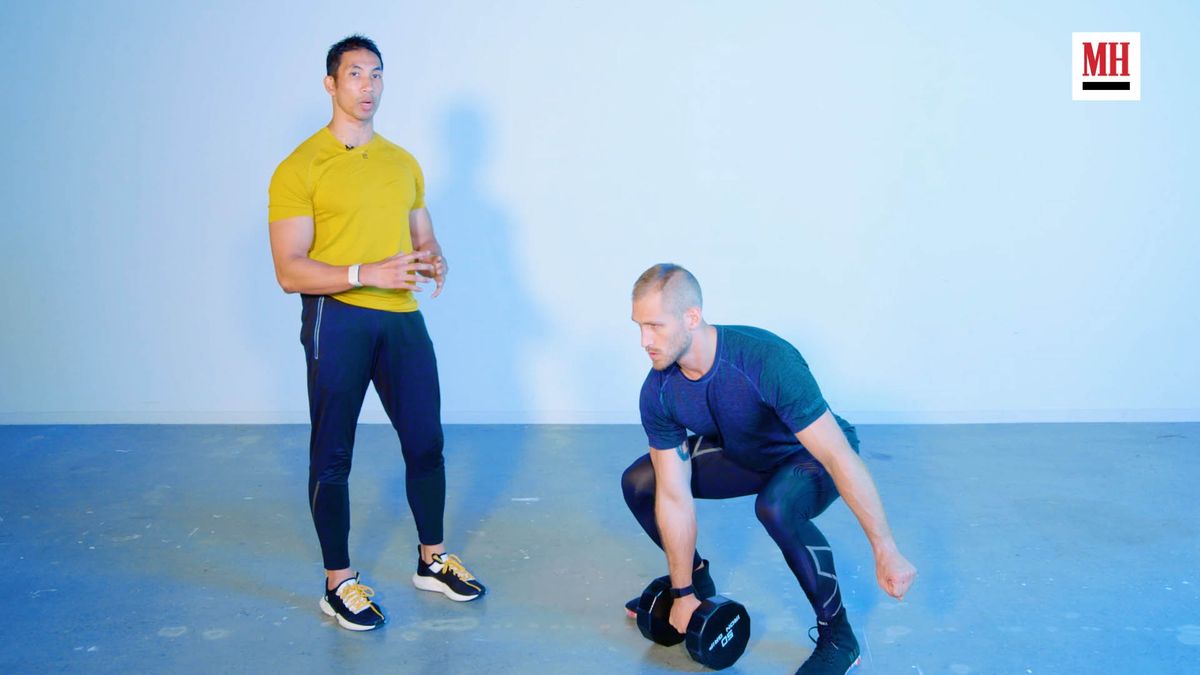

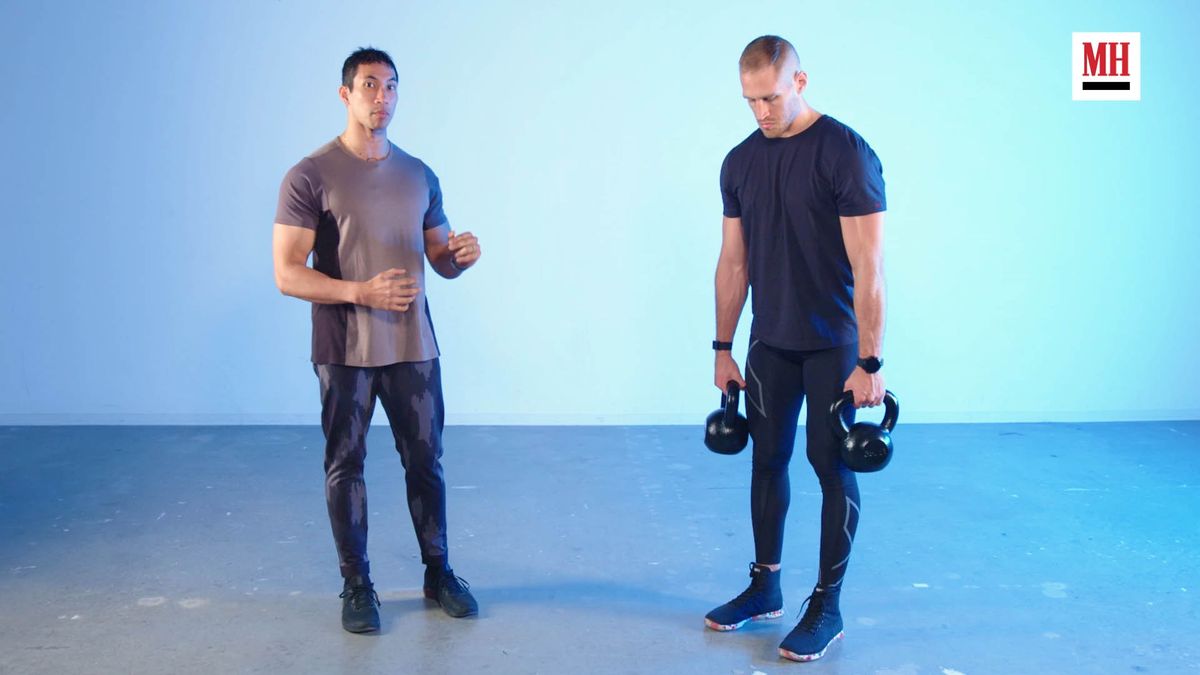

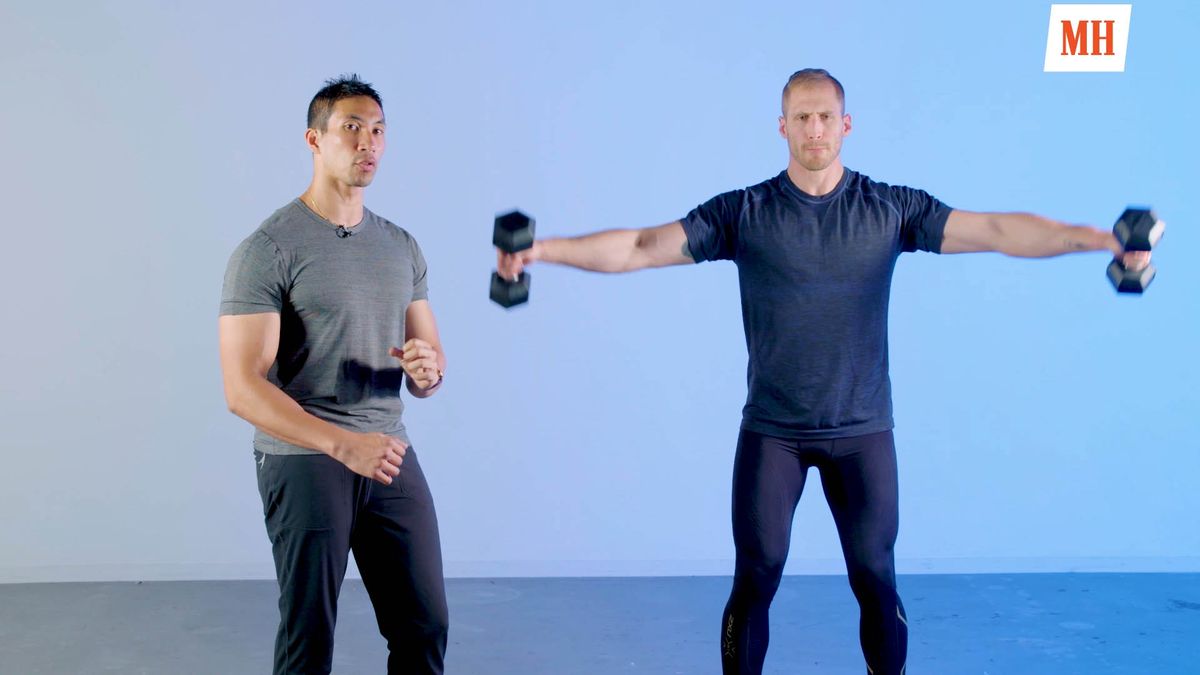
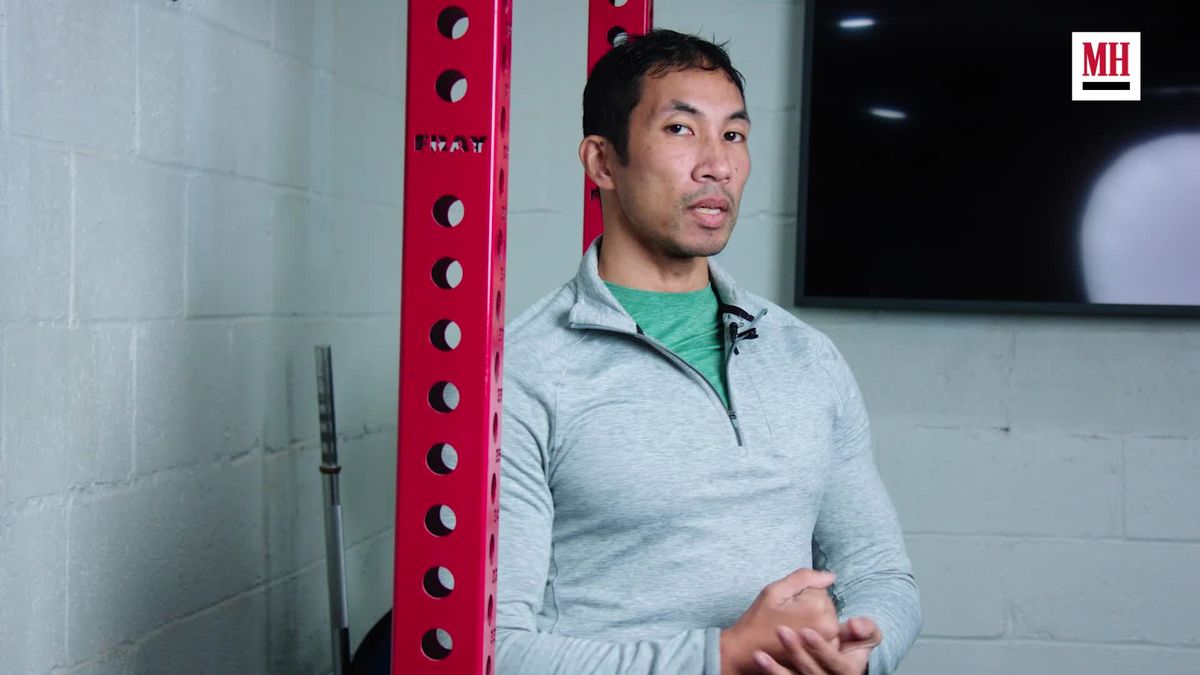
Comments are closed.